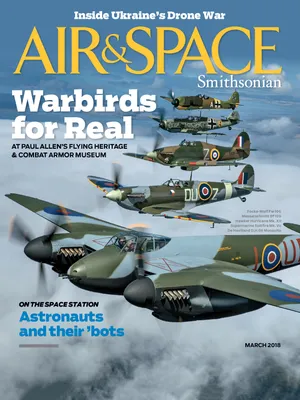It Came From Another Galaxy
A peculiar, cigar-shaped asteroid turned out to be an interstellar visitor.
/https://tf-cmsv2-smithsonianmag-media.s3.amazonaws.com/filer/0a/1f/0a1f505a-6870-49cb-ae32-44d146f12d09/01c_fm2017_interstellarasteroid_live.jpg)
Its speed gave it away. The first asteroid whose name has an “I”—for “interstellar”—whooshed into our solar system and was spotted last October by a telescope in Hawaii called Pan-STARRS1. On October 19, Rob Weryk, a post-doctoral researcher at the University of Hawaii’s Institute for Astronomy, was scanning a series of images on his computer screen for near-Earth objects when he saw tiny streaks. When he tried to determine the object’s motion using data from the previous night, the results didn’t make sense. His first reaction: “That’s weird.” His second was to call a colleague, who observed the object on a third night. The two realized that the speed matched something “that would come to the sun, and after it passes the sun, it would go away into the depths of space never to return.”
Named 'Oumuamua, which roughly translates from Hawaiian to “a messenger from afar arriving first,” the asteroid had just completed its wide, hyperbolic turn around the sun in September, increasing its already shocking cosmic cruising speed from 59,000 mph to 196,000 mph. Earth travels around the sun at about 67,000 mph; the asteroid Vesta plods along at 47,000 mph with the rest of the rocks in the main belt between Mars and Jupiter.
“Because it was moving really fast, it wasn’t going to be visible for very long,” says Weryk. Observatories around the world dropped everything to inspect the traveler before it got too far away to see. The pole-shaped rock, tinted red from being battered by cosmic rays, stretches about a quarter-mile, 10 times longer than it is wide. It will pass Neptune’s orbit around 2022 as it leaves the solar system in the direction of the Pegasus constellation. 51 Pegasi was the first sun-like star discovered to have a planet orbiting it. Perhaps in 559,000 years, a Pegasusian will announce the discovery of its first interstellar asteroid and wonder where it came from. In the meantime, Weryk has been busy giving interviews, including two live shows for BBC radio.
